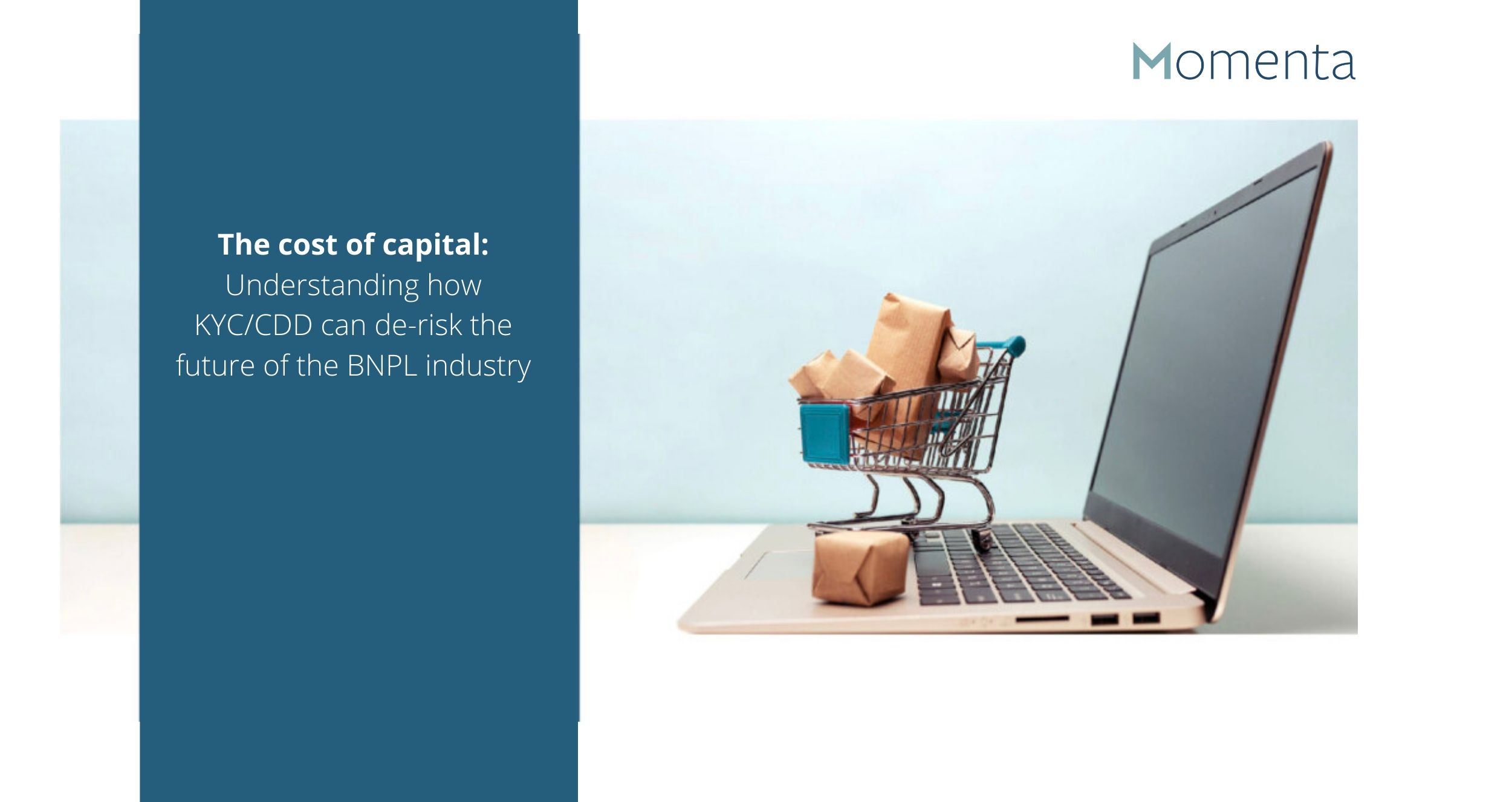The cost of capital: Understanding how KYC/CDD can de-risk the future of the BNPL industry
The financial hardships brought as a result of the pandemic has caused significant growth in individuals turning to Buy Now Pay Later schemes, to help them ease their financial burdens. This trend has swept nations, with many concerned about the implications of individuals’ ability to buy now, and not pay later.
The first BNPL services were introduced circa 5 years ago and today they are offered by numerous online retail stores across the world. Many individuals who are left in vulnerable financial positions tun to the quick fix to help them make instant and easy purchases with the thought they can pay back the funds over a certain period. It is human nature to look for what may be regarded as a simple solution.
Setting up an account can take less than 5 minutes and no credit history checks are needed, giving many yet another reason to sign up as they won’t have the opportunity to be rejected (as can be the case with more traditional lenders). This may sound like a great deal, to the parent who needs to purchase a new washing machine that has just broken or the student who cannot afford to buy the trainers he wanted. Individuals also tend to purchase more than they should when they BNPL, as psychologically, we often think (or hope) when it comes to the next payment all will be fine. The key issue here is what if they are no longer able to make their installed payments? How will the lender access their funds that no longer exist, and why is risk not evaluated differently from the start?
There over 5 million active users on Afterpay in the US alone. From January to February 2020 saw an increase of 30-40 % in terms of sign up. 2019 saw over 2 million Australians use BNPL services and in 2023 it is expected that users will pass 4 million. These are economically (and socially) volatile times, such a high percentage of growth may not be a good thing at all. Without appropriate credit checks, The risk associated with these individuals is one that could potentially warrant concerns and some feel this could be a disaster in the making and that the platform could be creating create bad debt.
The potential for bad debt is vast when you cannot calculate bad debt allowance as there are no credit checks or CDD. Yes, all companies plan for bad debt, but this could lead to catastrophic results leaving many consumers in debt (many of which are students).
Several issues have now been elevated as many of the individuals who sign up for these services are not privy to or do not understand the implications of missing a payment or the impacts it can have on a credit rating. What is lacking is a regulated system that de-risks through CDD/KYC systems and future proof these services. Just because someone doesn’t have a comprehensive credit history doesn’t mean that they should not at least be validated as an absolute minimum standard. It could be argued that there should be an increase in affordability testing – establishing whether consumers can or can’t afford to pay the funds.
As the inevitable longevity and replication of this business model continues, serious risks of customers as well as BNPL business owners could result. Regulators don’t review of services that offer 0% interest-free rates. This is however not to say that they are not watching at all. Some of the larger BNPL organisations for AML/ML fines have already been fined (and these have not been small). Business Insider Australia reported that more than 15% of Afterpay’s income is produced by late fees, according to its latest results. So while it may be concerning that a large proportion of consumers pay late fees, BNPL services are profiting from this, and it is this which the regulator may focus on.
It could be argued that responsible lending should have to result in defining the vulnerability of an individual, their risks, and their financial ability to be able to access or benefit from the BNPL service. Equally, surely it is in the interests of the BNPL services to ensure that they future proof their operations to avoid a plethora of risk associated with bad debt and economic instability.
If you are looking to strengthen your KYC/ AML operations, get in touch with us today.
Works Referenced
- Australian FinTech. “Buy Now Pay Later Market to Double by 2023: Report.” Australian FinTech, 15 Apr. 2020, australianfintech.com.au/buy-now-pay-later-market-to-double-by-2023-report/#:~:text=According%20to%20the%20report%2C%20the. Accessed 4 June 2020.
- Brookes, Joseph. “Buy Now Pay Later Market to Double by 2023: Report.” Which-50, 15 Apr. 2020, which-50.com/buy-now-pay-later-market-to-double-by-2023-report/. Accessed 4 June 2020.
- Sharma, Ruchira. “How Klarna’s Buy-Now-Pay-Later Set up Left One Student Feeling Exploited.” Inews.Co.Uk, 10 Oct. 2019, inews.co.uk/news/klarna-buy-now-pay-later-students-finance-payment-673962. Accessed 4 June 2020.
- Wearn, Rebecca. “The Rapid Rise of ‘Buy Now, Pay Later.’” BBC News, 26 Jan. 2020, www.bbc.co.uk/news/business-51195759. Accessed 4 June 2020.

